|

CHAPTER
EIGHTY SEVEN:
SATURDAY NIGHT FEVER
Written by Rick Archer
|
|
SUBCHAPTER 366
-
The Inside
Story of Saturday Night Fever
|
Rick Archer's Note:
I am a
strong believer in Fate. Due to 100 unusual
experiences from my life, I have come to believe my
dance career was predetermined.
Magic Carpet Ride
is the book I have
written to explain the unusual circumstances of how
my dance career started. The key event was the
unexpected appearance of
Saturday Night Fever in December 1977.
This unknown sleeper movie became a supernova which
launched my dance career into orbit. Considering the
movie's dramatic impact on my life, when I began to
write my book, I decided to study the events that led to the movie's creation. To be
frank, I was so astonished by what I learned, I
believe the making of this movie is just as much a
Supernatural situation as the events surrounding my
own story.
Assuming I am correct in my
conclusions, then I am hardly the only person whose
life has been directly affected by Fate. I
daresay John Travolta would be the first person to
agree with me on the existence of Fate. But
why stop there? As we shall see, there was an
entire boatload of weird curiosities surrounding Saturday Night Fever.
Saturday Night Fever became the
career-defining moment for eight different men -
Producer Robert Stigwood, Actor John Travolta, the
three Bee Gees, Story Writer Nik Cohn,
Screen Writer Norman Wexler, and 'New York' Magazine Editor Clay Felker.
Seven of
these men would become rich and famous beyond their
wildest imagination. However, not everyone
thrived. One
man failed to make a dime. Not only that, his
career and reputation were ruined in
the process. Two years later, this broken man became the main
reason I would one day own the largest dance studio
in America. But we will save the story of
Urban Cowboy for later. Right now,
the recent 2020 HBO special on the
Bee Gees parallels this story to
perfection. If you have not seen this special,
you should do so. It is very well done.
I decided to share this story because it will help
you understand many of the events in the two-hour
Bee Gee documentary.
The
story behind Saturday Night Fever serves as the most perfect example of
'Synchronicity' I have ever witnessed. I understand this is a bold
statement, so let me share the unusual story of
Saturday Night Fever. Then my Readers
can reach a conclusion whether Fate played a role
here. I will be curious to know what you
decide.
Rick
Archer,
dance@ssqq.com
|
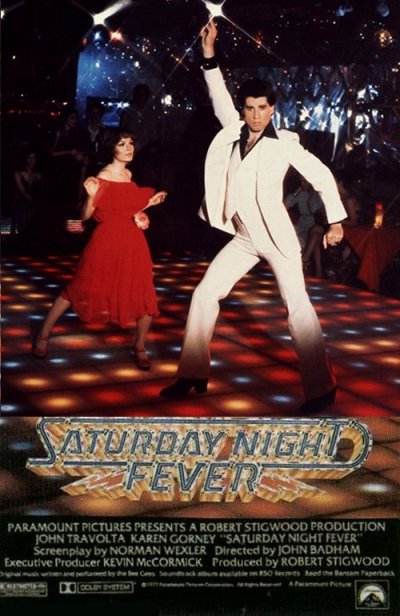 |
|
SUBCHAPTER 367 -
PRODUCER ROBERT STIGWOOD
|
When it came to Saturday Night Fever, Robert
Stigwood was unbelievably fortunate. However, he wasn't
just lucky, there is considerable evidence that he also
benefitted from 'Dumb Luck', i.e. a situation when someone
succeeds in spite of themselves.
Robert
Stigwood (1934-2016) began his career as a music
producer. Born in Australia, Stigwood moved to England at age
21. Stigwood had a college degree, but no idea what to do with it. After a series of dead-end jobs, Stigwood discovered he had an interest in promoting local
rock bands in Portsmouth.
Stigwood got his start in the mid-Sixties as the manager of
future rock star Eric Clapton. It was Stigwood's idea to pair Clapton
with Jack Bruce and Ginger Baker. This led to
Cream, the superstar rock band that briefly rivaled the fame
of the Beatles and Rolling Stones.
Along the way, Stigwood managed The Who (Tommy, Pinball
Wizard)
as well as the Bee Gees from Australia.
The three Bee
Gee brothers were in awe of Stigwood. They described
him as a creative genius with a very quick and very dry wit.
Stigwood was an aggressive manager who wasn't afraid to take
chances. Stigwood had a favorite saying.
"There are a lot
of ways to become a failure, but never taking a chance is
the most effective."
Unfortunately, Stigwood's bold
style got him in a lot of trouble early in his career. Stigwood
was the
victim of a bad move that led to one of the funniest
anecdotes in
rock 'n roll history.
In 1966, Robert Stigwood tried to poach another manager's
act into his own fold. The manager, Don Arden, took
exception.
Don Arden: "I had to stop
these overtures – and quickly! I contacted two
well-muscled friends and hired two more equally huge
toughs. The five of us went along to nail this cocky impresario to his
chair with fright.
There was a large ornate ashtray on
his desk. I picked it up and smashed it down with such
force that the desk cracked. I gave a good impression
of a man wild with rage.
My friends and I
had carefully rehearsed our next move. I pretended to go
berserk. I lifted Stigwood bodily from his chair,
dragged him on to the balcony and held him by his feet.
Stigwood screamed as he
looked down at the pavement four floors below. I asked
my friends if I should drop him or forgive him. In
unison they shouted: 'Yeah, do it! Go ahead and
drop the son of a bitch!'
Stigwood went
so rigid
with shock, I thought he might have a heart
attack, so I quickly dragged him back into the
room. I warned him never to interfere with my
groups again."
Stigwood learned his lesson. From that point on, Stigwood
stayed closer to the rules and enjoyed considerable success.
|
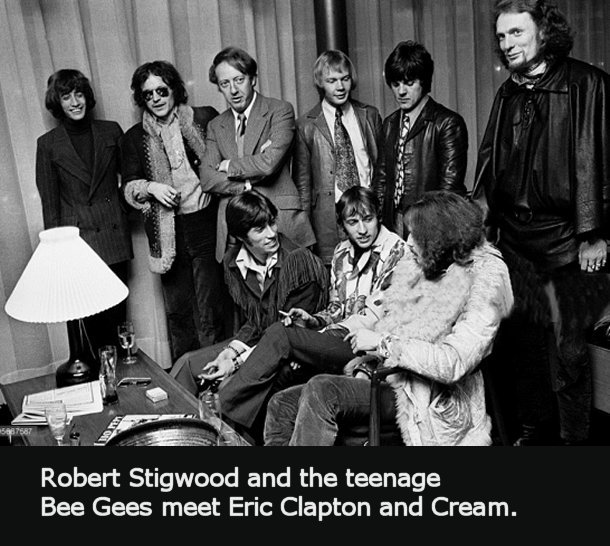
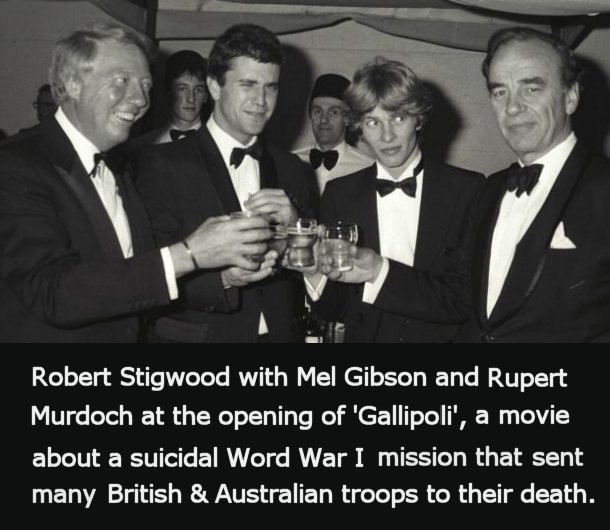
|
SUBCHAPTER 368
-
CLAY FELKER
|
|
If I
can make it there, I'll make it anywhere,
Come on, come through, New York, New York.
-- Frank
Sinatra, 'New York, New York'
Clay Felker
(1925-2008) was the man who breathed life into
Saturday Night Fever. He was the embodiment of Sinatra's
New York, New York. If Felker could make
it there, he could make it anywhere. Coming from
Missouri, Felker was an outsider who wanted to be an
insider. He succeeded royally. As editor of New York, one of the city's most
influential magazines, Clay Felker became the
ultimate New York insider.
Clay Felker was said to be one of the best-connected
people in the media business. A celebrated
man about town, Felker made it his
job to know
every important person in news, television, politics, theater,
music,
fashion, Wall Street and Hollywood. As his
writer friend Tom Wolfe put it, "Clay Felker was the
man who invented New York."
Throughout his
career, Clay Felker was known as a 'trend-spotter'.
Felker's special genius was his ability to see what was breaking
before anyone else. Felker
was quoted about his love for
trend-spotting. "Journalism is very often about
the future."
This was a
fitting observation from a man who practiced what he preached
time and again. Felker's passion was to
stay ahead of the curve. As a magazine editor,
Felker understood the importance of reporting on
interesting developments well in advance of his
competitors. Therefore he kept a keen eye out for
stories that would capture the public's interest
before they became obvious.
|
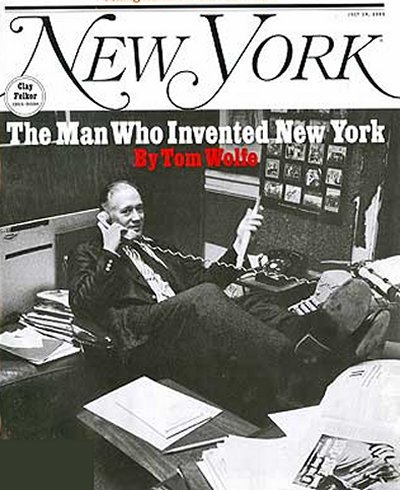 |
 |
Sometimes
Felker went one step further. He would see something that
might be ready to happen, then authorize a story to
cause it to
actually happen. Taking pride in spotting cultural
trends before
anyone else,
Clay Felker reveled in providing the spark that lit the fire.
Intimately
connected to the pulse of America, Clay Felker was
one of the most influential journalists of his time.
Back in the Sixties and Seventies, Clay Felker was the legendary editor of
New York magazine. Felker not only
helped found the
The Village Voice, he also helped
his friend Gloria Steinem start
Ms magazine. In 1977 Felker
moved on to
Esquire magazine.
Subjects near and dear to Felker's heart were
'Status' and 'Subcultures'. Or 'Haves and Have Nots' as he
put it. Status came first. Felker was intensely
curious about the rich. Fascinated
by ambition and social climbing, his preoccupation developed because
Felker was a social climber himself. He wanted to
be just as famous as the people he associated with.
Felker believed he was defined by the company he kept.
Therefore he constantly surrounded himself with important celebrities.
In this way Felker expected to become a celebrity in his own right.
The method he
used to make himself important was ingenious. Fascinated
by the
nuances of power and status in the city, he found a
unique way to obtain the inside information New York
magazine was famous for. Felker had a fabulous
apartment at 322 East 57th where he threw the most
lavish parties in New York City. His parties were said
to be the ideal place to rub shoulders with the rich, the elite
and the talented. Tom
Wolfe joked that Felker's vast fireplace was such an inviting
place to be noticed that 'fourteen status
seekers would sit there all at the same time'.
|
Felker had paid his dues as he worked his way to the
editor's position at New York. In
so doing, the magazine had become his baby. Now that
he was meeting the movers and
shakers of New York City on a regular basis, he realized how obsessed with Status
they were. Felker understood their motto was to see the best and
to be seen by the best. Why not be the guy who brings
them together? Using his unique position, Felker was
able to grant attention to many of the world's celebrities,
people who were dying to be noticed as often as possible.
Felker discovered if he put important people from different power
corridors in contact with each other, they would
begin to gossip and unleash a treasure trove of trade
secrets. With a martini in one hand and a
beautiful woman in the other, Felker would listen in as they exchanged ideas.
Any time the stories became juicier, Felker would snap his fingers to ensure another
martini would be produced on demand. Felker smiled
as people dropped one story after another into his
lap. Felker knew exactly what he was
doing... and so did his guests.
Felker became the quintessential New York insider with his
swashbuckling air of confidence and his custom-made clothes.
Using his stunning movie star wife Pamela Tiffin as arm decoration, Felker had no trouble holding his own
with the Beautiful People. Due to the publicity his
magazine generated, Felker's triumph was being as important
to them as they were to him.
By making his parties and his magazine inseparable, New York
became the direct extension of those smart
Upper East Side dinner parties.
Every celebrity knew they could promote their latest movie
or book by attending. Every politician could test run
their latest policies. Every cat and shrew could exact
revenge by dropping dirty tidbits. Having obtained the
power to elevate or reduce Status, Felker was now the city's
ultimate gossip columnist. Engaging his guests in
juicy talk on topics such as
politics, real estate, business,
and prominent people misbehaving, Felker used his dinner parties to keep a close finger on the pulse of the town.
|
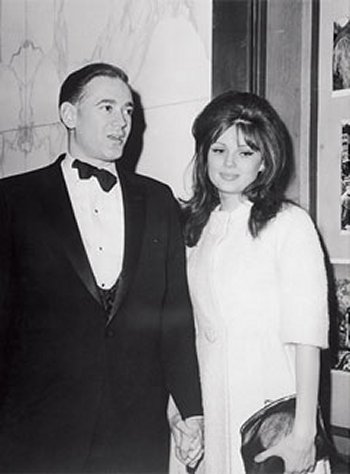 |
On Monday morning, Felker would weave all the name dropping
and gossip tidbits into his next set of
stories. He would keep his sources anonymous of
course, but a cursory scan of his most recent guest list would
typically
suggest the likely identity.
Felker made his magazine a must-read for the movers
and shakers of America's premier city. New York
magazine became the style guide for every hip artist,
wealthy socialite, ambitious politician and shrewd businessman looking
for an angle.
Everyone knew that each issue would contain something sharp, well-informed, and 'trendy'.
Felker's
parties at his tony East 57th Street apartment were
a popular destination for glamorous people vying for
a cover story. Others came in hopes of hearing a lucky
Wall Street tip. Everyone knew
a chance conversation with the right person could
lead to a career break. No one turned down a
Felker party invitation.
Felker was curious about finding hidden nuggets as well. Felker
understood the sub-cultures were not going to come to him,
so he was on the lookout wherever he went. Clay Felker
had a stable of creative writers to choose from. As the
ultimate 'trend spotter', Felker made it his business to
notice something interesting, then go find one of his gifted writers to poke his or her nose into
it.
|
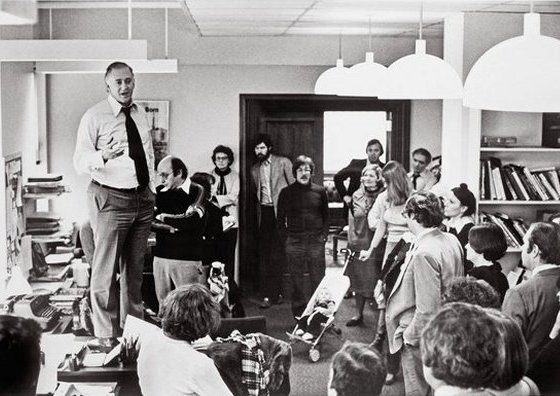 |
|
|
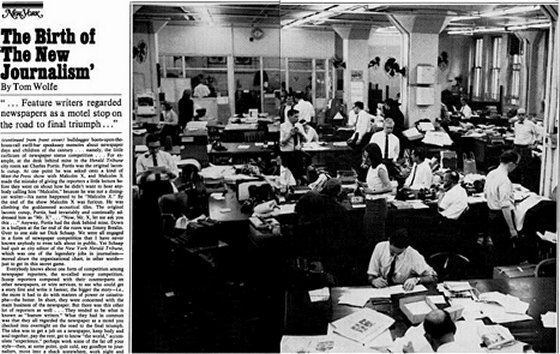
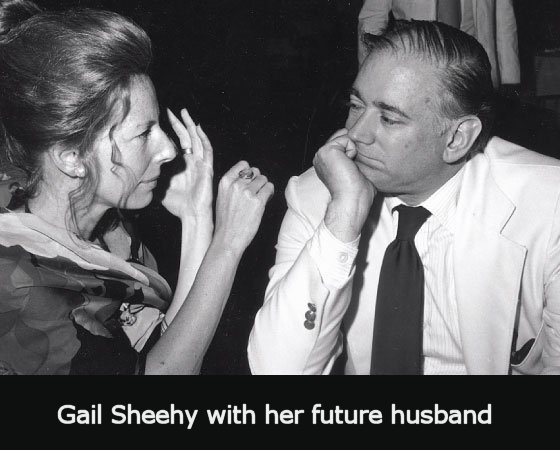
 |
"New York
was the magazine that helped create the notion of the writer
as star," said Ken Auletta, one of Felker's writers, to
the
Washington Post in 1993. "Felker made his
writers famous."
Tom Wolfe was Felker's first
breakout star. New York specialized in
reporting the heady
confusion of the difficult Seventies. Felker took
special delight in stories where the Ins and the Outs
interfaced awkwardly. One such story was Tom Wolfe's
"Radical Chic" which described a strange fundraiser for the Black
Panthers at the apartment of famous conductor Leonard Bernstein.
Wolfe's scathing story, which coined the term 'limousine
liberals', became a classic example of the 'New Journalism'.
Six years later, Wolfe would sum up the entire era when he
called it the 'Me Decade'.
Gail Sheehy was another writer Felker encouraged. Sheehy was an early feminist.
She first came to fame by writing about how women negotiated a
Man's World during the Sixties. Like her counterpart
Tom Wolfe, Sheehy had a gift for the clever phrase.
Here is a classic example Sheehy used to describe aggressive women in
singles bars.
"Booted,
pant-suited, birth-controlled and pleasure-goaled."
Gail Sheehy's vivid 1971 reporting on
hookers in New York was the perfect example of Felker's
trend-spotting and reliance on his writers to bring the
story to press. Felker suggested to Sheehy that she investigate
prostitution from a very unusual angle.
Gail Sheehy took the hint. Putting away her notepad, Sheehy took to the streets wearing hot pants, white
vinyl boots and a revealing top.
Behind puffed up
hair and too much makeup, the disguise worked to perfection.
Showing considerable moxie, Sheehy mingled with the working girls
to get some straight talk. What Sheehy brought back to
Felker was an astonishing eyewitness account of the sex
trade. Sheehy's articles caused a firestorm of
controversy. It seems many of the city's richest, most
powerful families and corporations benefited directly and
indirectly from the illegal sex business.
Sheehy's story and others like it created sensation and
controversy.
Be it Gail Sheehy or Tom Wolfe, stepping on people's toes was a Felker specialty.
Someone was always mad at Clay
Felker for something one of his writers had written
about them. This was what Clay Felker lived
for. It did not take long until Felker's magazine
was on the tip of everyone's tongue. Who would be
'Felkerized' next?
Tom Wolfe said
that Clay Felker
helped New York discover its
own identity. Felker also
changed the face of magazines.
Be
it drugs, counterculture, feminism, obsession with status, Clay
Felker encouraged citizens to take a close look at
themselves. By noticing what was interesting about everyday places and
people, Clay Felker became the inspiration for adding the Lifestyle
section to the American newspaper, a feature we now take for
granted.
Gail Sheehy married Felker in 1984. After his passing
in 2008, she said her husband was an inspiration to many writers. Sheehy
pointed out that
Felker presided as editing God to an explosion of
creative nonfiction back in the Sixties... Tom Wolfe, Truman
Capote, Joan Didion, Jimmy Breslin, Norman Mailer, Hunter Thompson,
Nora Ephron, Gloria Steinem, and Aaron Latham. And let's not
overlook Gail Sheehy. Her 1976 book Passages was
named by the Library of Congress one of the ten most
influential books of our times.
Tom Wolfe, Felker's
first superstar, turned a Felker suggestion into The Electric
Kool-Aid Acid Test, a fascinating book on the
counter-culture. Nor did he stop there. Tom Wolfe went on to become a best-selling author with books like
Bonfire of the Vanities
and The Right Stuff. Wolfe was eternally
grateful to the man who gave him his start. He never forgot who
his mentor was. In a 1993 interview with the Washington Post, Tom Wolfe
called Clay Felker "the greatest idea man that ever
existed."
|
SUBCHAPTER 369 -
NIK THE
SLIK
|
Nik Cohn was the next piece of the Saturday Night
Fever puzzle. Born in London in 1946, Cohn got his
start as a rock critic. Always the clever guy, by the
age of 18 Cohn was a fixture on the swinging London Mod
scene of the late Sixties. He partied with rock stars
and hung out with his celebrity friends on tours.
In a manner similar to Clay Felker, Nik Cohn parlayed his
insider connections at these parties into a job.
With an ear for gossip, Cohn figured out a way to make
money off the fame of his companions. He contributed briefings about mods and rockers to
The Observer. Along the way, Cohn wrote
a 1969 book about the history of rock 'n roll in Britain
during the Sixties.
Nik Cohn had an odd claim to fame. Cohn
was a close friend of Peter Townshend, lead singer of
The
Who. Cohn was an avowed pinball maniac and
Townshend loved watching him play. Cohn's obsession
with the pinball machine became the inspiration for
Townshend’s classic song Pinball Wizard.
Cohn was an adept social climber. As journalist and
media critic, he cultivated a circle of important contacts within
the British music business. After he became friends
with Peter Townshend, it was inevitable that Cohn would rub
elbows with Robert Stigwood, manager and booking agent of The Who.
The illustrious rock band became Nik Cohn's
connection to Stigwood's business operations. Cohn
spent considerable time on the set during the 1974 filming of Stigwood's
film version of Tommy featuring The Who.
In the process Nik Cohn became
a close friend with Bill Oakes,
president of RSO Records (Robert Stigwood
Organization). As so the social climbing
continued.
In 1975, Bill Oakes invited Cohn to come join him in New York.
After crossing the Atlantic, Cohn crashed on the couch in
Oakes' apartment. Oakes got Cohn an interview with
New York
magazine. Cohn was hired to cover the New York music scene.
One night Nik Cohn followed a tip and took a taxi over to
Brooklyn. He visited a nightclub known as
2001 Odyssey,
a Disco hotbed. Previously
Disco had been a phenomenon
limited to New York's gay bars. Cohn found it
interesting that this new style of dancing had
migrated to a working class neighborhood.
Cohn's visit
to the Disco gave
him an idea. It seemed to him that
Disco was spreading like a virus.
Cohn's experience with the music scene suggested there was a story
here. Cohn went
back to Oakes' apartment and immediately started writing.
Cohn's first
idea had been to pitch this idea to Clay Felker at New York
magazine. Then it crossed his mind that
perhaps the Stigwood organization might be interested in his
story as
well. As an afterthought, Cohn handed the story to his friend Bill
Oakes and asked him to pass it along to
Kevin McCormick, the man in charge of
film development for Robert Stigwood.
Kevin
McCormick
knew who Nik Cohn was. The two men had worked
together on the Tommy movie project. The
moment McCormick read the
story, he saw the potential.
McCormick made sure the story
reached the desk of Robert Stigwood.
Stigwood was sold from the start. Cohn's story
might be the answer to this huge John Travolta gamble he had
just taken.
|
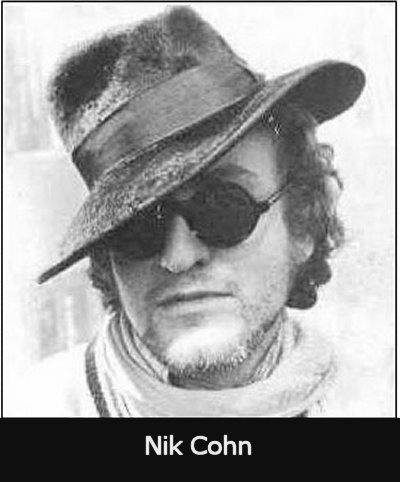
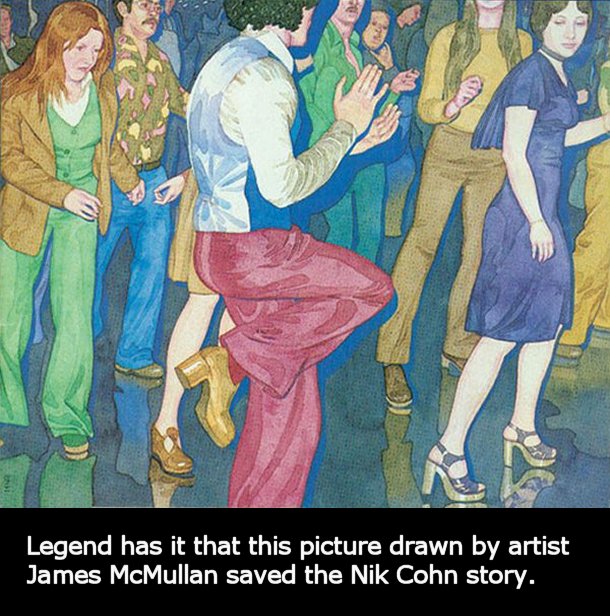
|
SUBCHAPTER 370 -
SELLING THE STORY
|
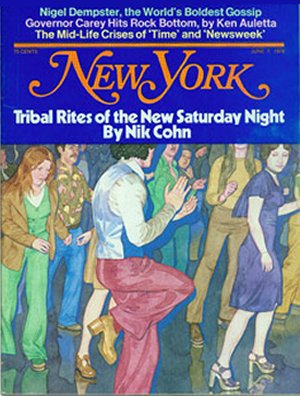 |
After Nik Cohn finished his story, he
went to work on getting it published by Clay Felker in New York magazine.
Cohn was an aggressive guy. He could have waited to
approach Felker at work the next day, but instead he actually went to the trouble of tracking
the editor down while he and several friends ate dinner one night at a posh New York
restaurant.
Granted an audience,
Cohn told Felker his idea depicted
a
world of lower-middle-class, lower-IQ youths who lived in
Queens, Brooklyn, and the Bronx in the mid-1970s.
These teens and young adults wrapped their entire lives
around Saturday nights in the Disco clubs.
To Cohn's dismay, Felker
just laughed in his face. Ridiculous. Then
Felker rubbed it in. With Cohn standing there, Felker
embarrassed the young man by asking his dinner guests what
they thought about a story covering
the Saturday night dance rituals of young working-class
Italian-Americans.
Understandably these important
cognoscenti scoffed.
Who gives a flip about a bunch of poor kids who like to dance on Saturday
night? They had heard it before. That story was as old as
Beach Blanket Bingo, The Twist, Motown and Elvis
Presley.
Seeing the scorn on his friends' faces, Felker said forget it.
To him, Disco music was a fringe phenomenon
exclusive to boring lower-class youth.
Cohn was crushed, but he wasn't going to give up easily. He
approached Felker's partner Milton Glaser who decided to
champion the story. Despite mixed feelings, Felker
gave in and let the story run. Nik Cohn's
story, Tribal
Rites of the New Saturday Night,
was published on June 7, 1976.
|
When Robert Stigwood saw Cohn's article appear in New
York magazine, he panicked a little. He had
just signed John Travolta to a million dollar contract and
needed a movie for Travolta to star in. Stigwood had
already decided he could generate a script from Cohn's
story, so he could
not take a chance of letting the story get away.
Fearful the publicity generated by the story's appearance in
Felker's magazine could start a bidding war, Stigwood wasted
no time. Stigwood told his lawyer friend Fred Gershon that this movie
could be worth a hundred million dollars. Gershon wasn't
quite so confident, but negotiated rights to the story
nonetheless. To Gershon's surprise, Nik Cohn played
hardball. Cohn had
the touch of a gambler in him. Cohn had heard from his friend Bill Oakes
how interested Stigwood was in this story as a script
for a movie. With his confidence bolstered by inside
information, Nik the Slik raised the price.
Previously
Nik Cohn had agreed to $10,000 for an option on
his article. Kevin McCormick was already on board to
produce the movie. To Stigwood's surprise, at the last
minute another producer materialized who had heard about the story before the
Cohn deal was finalized. Gosh, too bad, suddenly the price had gone up. Gershon
smelled a rat. He suspected that Nik Cohn
was
pitching this story to every agent in town.
Sensing they were being hustled, Gershon suggested that
Stigwood back off.
Stigwood wouldn't hear of it.
He had to have this movie, so he
personally took
over the negotiations.
"I'm going to pay the kid whatever
he wants." Stigwood
nailed
the deal down by
offering Cohn first
shot at the screenplay for a guaranteed $150,000, as
well as percentage points in the soundtrack album.
Fred Gershon was
aghast. This deal was
unprecedented.
He had never heard of music
percentage points for a writer. Stigwood said this
detail was added at Nik Cohn's insistence.
Gershon could see that
Cohn had been very shrewd.
Cohn had anticipated that the soundtrack would obviously be important
to a dance movie.
Using
his own instincts plus the inside knowledge his friend Bill
Oakes unknowingly passed on, Cohn bet the farm on his Disco
story. Give the man some credit. This
incident was very likely the first time a writer
had ever gotten points
for a music album, certainly when
the property was little more than
a curious feature in a magazine.
Given the
interesting details, one might conclude Nik Cohn
was a born hustler.
Now we know why Cohn pushed Clay Felker so hard... Cohn was
in a hurry to run up the selling price of his story!
Cohn's greatest accomplishment was not the story itself, but
in getting Felker to print his story against his judgment.
Since Felker was
dead set against it, Cohn had to move mountains to get Felker
to move on his story. However, once the story was
published, Cohn was off to the races. Cohn had
the credibility he needed to raise the asking price.
Here is what is interesting.
Given Clay Felker's initial lack of enthusiasm, it is a small wonder the story ever got
published in the first place.
Even
more amazing, the story was a complete fraud!
That's right... the Tribal Rites story was a total
fabrication.
Twenty years after Saturday Night Fever came out, Nik
Cohn admitted the story which inspired the movie script was a
fraud. However Cohn swore he had a good excuse.
Cohn explained that he had run into a serious language
barrier. Raised in England, Cohn complained he could not understand a
single word the uneducated Brooklyn teenagers were saying.
Their accents and terms were such a complete mystery to him,
Cohn gave up trying to understand. He simply observed
for a while, then went home. Without any substance to
base his story on, Cohn decided to fib.
Facing a deadline, what else could he do? Cohn said he
based his story on Rebel Without a Cause.
Put on your dancing shoes, James Dean. "You're
tearing me apart!"
Believe it or not, two years later Cohn changed his story
again. This
time Cohn admitted the problem had nothing to do with the
language barrier. In reality, Cohn had never once set
foot in the nightclub. On the night he visited 2001 Odyssey,
just as the taxi pulled up, there was a fight breaking out on the
sidewalk. Cohn decided it was safer to stay in the
taxi and just watch. To his surprise, one of the fighters
lurched over to Cohn's cab and threw up. With that, Cohn
told the driver to get him the hell out of there.
As they drove
away, Cohn caught a glimpse of a tall, confident figure
standing in the club doorway. Dressed in flared
crimson pants and a black body shirt, the man was coolly
surveying the action. Cohn was impressed by the man's
aloof demeanor. There was a special quality to this
mysterious figure
as if he was operating on a different plane from the rest. On
the spot, Cohn had his hero.
He
wrote a completely fictional story using
2001 Odyssey as his location and the unknown
figure in the doorway as his star.
Cohn had once hung around a charismatic street hustler named
Chris at a spot called Shepherd's Bush in London.
Basing his Disco hero on Chris, Cohn worked from there.
When Cohn was
finished, he added a note that insisted 'everything in
this article is factual.'
That, my
friends, is the very definition of chutzpah.
Yes, sad to say, there
was no real-life Tony Manero. Just add Tony Manero to the list of
Santa Claus, the Easter Bunny and tooth fairy fibs.
Yes, indeed, Nik Cohn pulled off one of the great scams in
literary history.
By lying through his teeth, Cohn parlayed a 15-page short story into
a small fortune. For the rest of his life, every time
someone bought a Saturday Night Fever album,
Cohn would hear the joyful ring of ka-ching, ka-ching. There were countless other perks as well. As a reward, Nik Cohn got to hang out with the biggest stars
and attend premieres with beautiful singers draped on his
arm. Not bad, huh?
|
SUBCHAPTER 371 -
the bee gees
|
Robert Stigwood had the magic touch. He parlayed his early success in the music
industry into ambitious productions on stage and in film.
Stigwood learned early on to mix music with drama.
Nearly every one of his productions involved music.
Among Stigwood's stage credits were
Tommy,
Evita,
Sweeney Todd, Hair,
Pippin,
Oh Calcutta and
Jesus Christ Superstar.
His movie credits would include Grease,
Tommy,
Gallipolli, and Jesus Christ Superstar
as well as Sgt. Pepper's
Lonely Hearts Club Band, a musical extravaganza.
Stigwood's main passion was to do Grease, the
exciting 1971 Broadway musical. By a twist of fate, Stigwood's
efforts to bring Grease to screen would accidentally
lead him to produce his most famous project, Saturday
Night Fever.
The Bee Gees were an
Australian rock group that consisted of three brothers,
Barry, Robin, and Maurice Gibb. The Bee Gees had
gotten their start in the late Sixties. With
Robert Stigwood as their manager, the
group quickly scored some initial hits such as 'To
Love Somebody', 1967.
Thanks to their instant success,
the Bee Gees were said to be the next Beatles.
However, they fizzled almost as fast as they sizzled.
You know the story... drugs, booze, distractions. By
the time the mid-Seventies rolled around, the Bee Gees were
toast. As of 1974, the Bee Gees were
being referred to in the past tense. Rumor had it they were
washed-up has-beens.
Fortunately Stigwood had enduring
faith in the Bee Gees. Stigwood
had a real soft spot for these guys. They were
always his pet project. The problem was that once
a rock band loses its momentum, it is difficult to
regain it. On the other hand, one good hit is all
it takes to get back on top. Easier said than
done. The Bee Gees were terrific
songwriters, but they had not had a major hit in years.
Their music consisted of gentle ballads at a time when
Hard Rock was the dominant sound.
It didn't look good for the Bee
Gees, but Stigwood stayed by their side.
Telling the three brothers he believed in them,
Stigwood encouraged them to keep writing songs. "You
know what they say. The harder you work, the luckier you
get."
After assuring his friends that
sooner or later their luck would turn, Stigwood had a
suggestion. Why not move away from ballads, the
Bee Gees staple, and take advantage of the growing
American interest in dance tracks? Good idea.
The Bee Gees moved to Miami and began experimenting.
In 1975, they crafted a
dance-oriented Disco song titled Jive Talkin'.
To their surprise, it became their first #1 hit in four
years. Jive Talkin' started their
comeback. The band liked their new sound, so they
stayed with it. You Should Be Dancing
was released released in 1976. It quickly became their
second dance track to hit #1. The Bee Gees were
back.
Robert
Stigwood was pleased his suggestion had worked out so
well. At the same time, he was very surprised at the
amount of interest in this unorthodox dance music.
Disco music was hardly his cup of tea, but Stigwood
understood that success in this business was
unpredictable and difficult to attain. His advice
was if it works, stick with it.
The script for
Saturday
Night Fever
appeared on Stigwood's desk out of nowhere. It was 'Luck', a wonderful,
serendipitous accident
so to speak. The moment he saw the word 'Disco',
one can imagine Stigwood's fondness for the Bee Gees played a major
role in his snap decision to pursue the SNF
project.
However, as we shall see, it turns out that Fate was about
to throw a major curveball into Robert Stigwood's plans.
When it came time to create the movie soundtrack, the Bee
Gees were unavailable. Stigwood went absolutely
apoplectic!
|
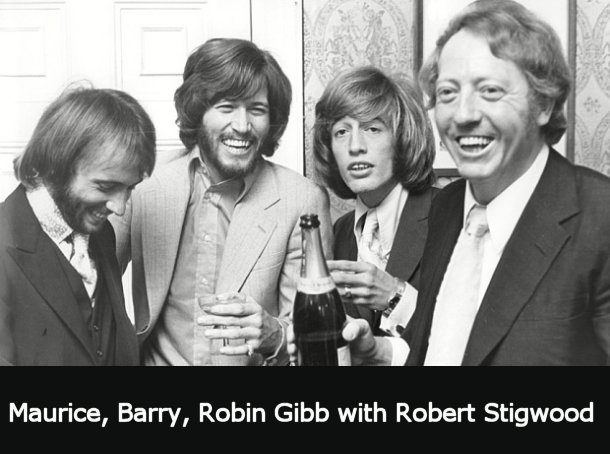
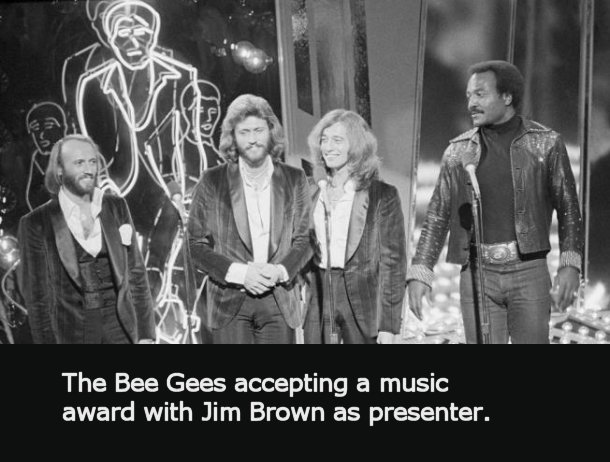
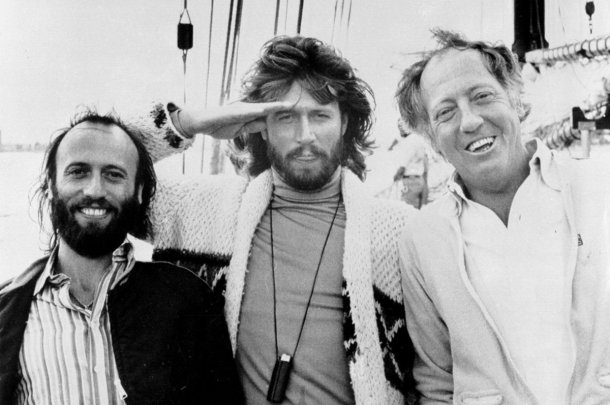 |
SUBCHAPTER 372 -
JOHN TRAVOLTA
|
Robert Stigwood
was kind of a lucky guy, but he also possessed considerable talent
and instinct. His 1976
decision to sign John
Travolta to a three-movie deal was sheer genius.
Welcome
Back, Kotter was a 1975 television sensation.
The show was based on a sarcastic, street-smart high
school teacher who takes a group of incorrigible yet
loveable teenagers under his wing and attempts to show them the light.
From the start,
John Travolta was the undeniable break-out star of the
show. However, he was not without his critics.
Some suggested Travolta couldn't act his way out of a paper bag. Ironically,
since Travolta was a high school dropout, it was
said he was just playing himself. Maybe so, but his popularity was off the charts.
Travolta could not go out in public without being mobbed.
By the second season, Travolta was receiving more than
10,000 fan letters a week.
Stigwood had to
have him! Producer Stigwood was so convinced of
Travolta's star potential that he had just placed a million
dollar bet on this young TV heartthrob. What
was Robert Stigwood thinking? A million dollar
contract for some kid with no longevity, no track record?
The insiders
thought Stigwood had gone nuts. In the history of
television, no one had ever successfully made the transition from TV
star to movie star. Many had tried, no one had won. Therefore the idea of paying a
million bucks to an untested actor was quite a stretch,
especially since many assumed that Travolta was no more
talented than Vinnie Barbarino, his dumb but sexy TV character.
Fortunately, Stigwood was privy to
something others were not aware
of. Stigwood had been a fan of Travolta
well before Welcome Back, Kotter.
Back in 1971, Stigwood had auditioned Travolta for the lead
in Jesus Christ Superstar.
Although Stigwood noticed Travolta had
oodles upon oodles of talent, there was
one problem... Travolta was 17, much too young
for the part.
Nevertheless, Stigwood penciled a note on a
yellow pad: “This kid will be a very big star someday.”
Around the same
time as Travolta's youthful audition, Stigwood had his eye on something else: Grease.
Stigwood was a huge admirer of the musical that
debuted in 1971. Based on a
hunch, Stigwood had taken out an option on Grease.
He planned to make it a movie after the play ran its course.
When Stigwood saw Travolta
on TV, he
immediately visualized Travolta as a great fit for the
movie version of Grease. Now that Travolta
had confirmed Stigwood's initial instincts with his Kotter
breakout, Stigwood decided to lock the kid up to do Grease before
his price
tag climbed any higher. Stigwood was convinced that Grease
was the perfect vehicle for the cocky teen heartthrob.
Then came the bad news. Grease
was off-limits! Uh oh. There was a clause in the contract for Grease
that said Stigwood's option would have to wait until 1978 in case the musical was still going strong.
Was Grease still going strong in 1976?
You betcha. It was Stigwood's bad luck to take out an
option on the longest running play in Broadway history.
No problem. Stigwood assumed for a little cash, the producers would let
him start filming sooner than the contract stipulated. Wrong. The producers refused to let Stigwood proceed early.
Stigwood was heartsick. He had signed
Travolta based on the gamble that Grease would be available
soon. It was 1976 and he would
have to wait until 1978 like the option said. To wait
two years was utter madness. Travolta was hot right now!
This was serious bad luck. Or was it? Stigwood
certainly thought so. However, anyone familiar with
Fate knows that sometimes bad luck has a
way of turning into good luck.
In this case Stigwood's ambitions were rescued when Nik Cohn's
Disco
story appeared on his desk out of nowhere.
Stigwood quickly
realized that Cohn's
story would be perfect for Travolta's talents.
Now wasn't that a nice little coincidence??
It almost makes you wonder if Fate was involved.
|
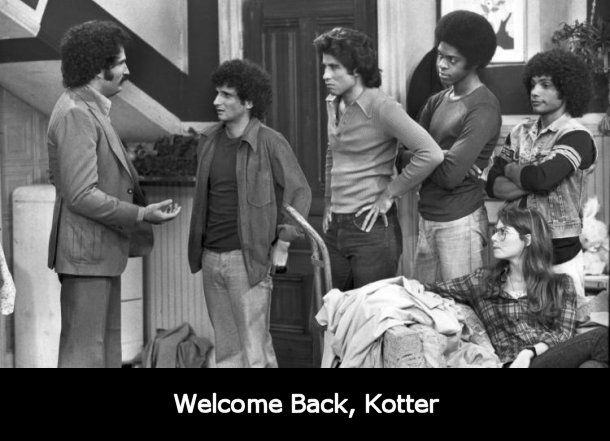
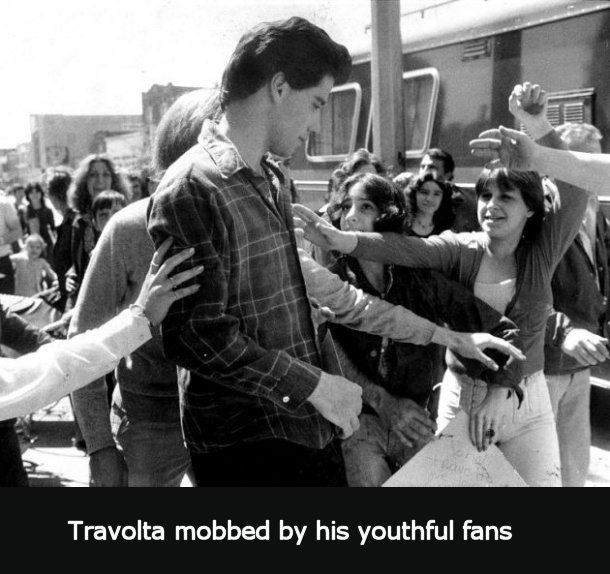
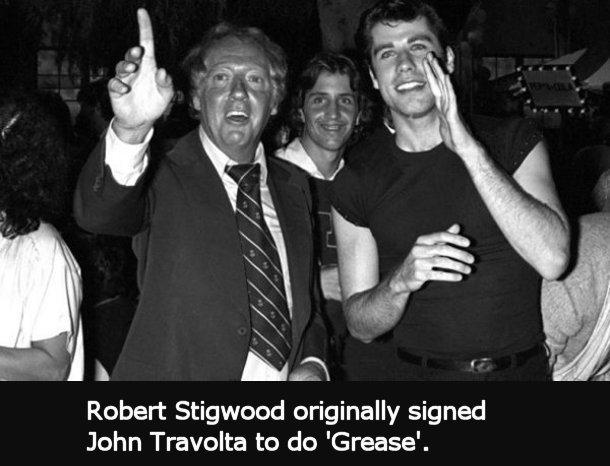 |
SUBCHAPTER 373 -
JOHN AVILDSEN AND
NORMAN WEXLER
|
| |
It was late in 1976. Robert Stigwood was in a serious hurry to take
advantage of the timely appearance of Cohn's story vis-à-vis
Travolta's expensive new contract. To Stigwood's surprise, the talented,
but controversial John Avildsen
was available. Avildsen was best known for making the
sleeper hit Joe. Produced on a tight
budget of only $100,000, Joe grossed over $20
million box office, making it the 13th highest-grossing film
of 1970.
Stigwood had wondered why a director of Avildsen's
caliber and track record was available. Was Stigwood missing something?
He checked around and discovered Avildsen had been fired as
the director of Serpico, a movie with Al
Pacino that was a surefire hit.
A keen observer of talent,
Stigwood could see Avildsen was
abundantly gifted. However, Stigwood knew full well he was taking a risk with the
temperamental director
by considering him.
Stigwood decided to bring Avildsen in for an interview.
Avildsen said if Stigwood had misgivings, why not take a
look at Rocky, his most recent project.
At the time, Rocky was a couple month's away from being
released in December. After
seeing a rough cut of
Rocky, Stigwood
was impressed. Rocky was a movie about
an underdog who succeeds against all odds. Ditto the
Travolta character. In addition, Avildsen had a track
record of turning sleeper movies into hits. Ditto
Saturday Night Fever. Figuring Avildsen
could do the same thing for the inexperienced Travolta that he did for
Sylvester Stallone, Stigwood hired Avildsen on the spot.
|
Big mistake.
Almost from the start Stigwood regretted
taking a chance on Avildsen. To begin with, the temperamental director
quickly
insisted on hiring a temperamental writer. Avildsen
wanted screenwriter
Norman Wexler.
Not so fast, Stigwood
said.
Nik Cohn
was already working on the script.
Besides, if this Wexler
guy was so good, then why was he available? "Because
Norman Wexler is a madman."
Stigwood raised an eyebrow. "Why
should I hire a madman?"
Avildsen replied, "Because he's a genius."
Avildsen explained that Norman
Wexler's screenplay for Joe had received an Oscar
nomination for Best Original Screenplay. Then he added
that Wexler's screenplay for Serpico
received an Oscar nomination for Best Original Screenplay.
Did Stigwood want his movie to rest on the talents of an
amateur with a 15 page magazine story or hire a proven
talent?
Good point. Stigwood said he would reconsider his decision.
No one
in the industry would touch Wexler, but Stigwood
decided to roll the dice. Wexler was not only a
genius, he was desperate for work due to his bad reputation. Stigwood had a
hunch Wexler was likely to pour his
soul into the project and he was right. Wexler's script was so brilliant one can ask if his own pain gave him
added
insight.
Wexler captured the bleak lives of the
oft-struggling Brooklyn street kids far too well.
|
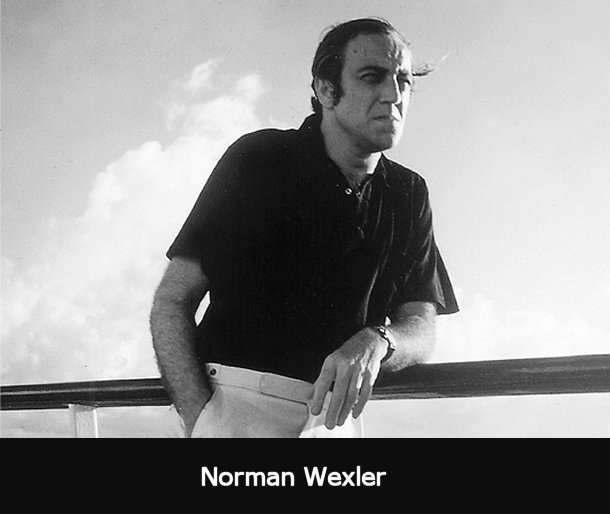 |
Avildsen was right about the genius part, but he was also
right about the madman part. Wexler was a real-life Jekyll and
Hyde. A Harvard graduate with an IQ of 180, Wexler had
done brilliant work on Serpico, a truly
superior movie. At the same time, his psychosis made
him fearless with delusional grandeur. Wexler was a vicious,
vindictive paranoid who was shockingly uninhibited.
Throughout the filming, Norman Wexler terrorized various
people on the set with his antics. When Wexler was off
his medication, he could turn very aggressive. One day
Wexler showed one of the female extras the .32 caliber
pistol he was carrying. He was trying to impress the
woman, but it had the exact opposite effect. However,
there was a silver lining.
No one gave
Norman Wexler the slightest bit of trouble after that. No
one dared to disagree with Wexler on the slightest script
issue. With his script left untouched by lesser
talents, Wexler's brilliant screenplay raised Nik Cohn's
humble efforts to amazing new heights.
Meanwhile, Robert Stigwood had growing
doubts about
his
director.
Rocky had just been
released and Avildsen was getting a ton of positive press.
Perhaps Avildsen's success with Rocky had gone to his
head because he was getting John Travolta confused with Sylvester Stallone. Taking a
page out of West Side Story,
Avildsen told Stigwood he wanted to use Travolta for a big fight scene inside the club. Avildsen's vision was some sort of
rumble straight out of West Side Story, the Disco version of Sharks versus Jets. Stigwood's assistant Kevin McCormick tried to explain this was a different kind of movie,
but Avildsen was adamant.
Trying his best to be patient with the volatile director, McCormick offered a compromise. Why not let some of the extras have the fight if it was that
important?
Avildsen wouldn't listen. It had to
be Travolta throwing the punches. No one else would
do. McCormick asked the writer Wexler what he thought.
When Wexler said the fight was not consistent with Travolta's
standoffish character, McCormick put his foot down and
said no.
Angry at Wexler for not backing him, Avildsen
pointed out that Wexler was
insane. What did Wexler know? To Avildsen,
Wexler's disloyalty justified bringing in a
third writer.
McCormick said no to that too, giving Avildsen the 'too many
cooks' cliché. However McCormick's logic went right over the
prima donna director's head.
Avildsen put his foot down and implored Stigwood to back him
up. Now Saturday Night Fever had three writers.
Avildsen's next move was to irritate
John
Travolta. He decided Travolta
was a rotten dancer, physically soft and way too fat.
He told Travolta to lose 20 pounds
and find some muscles.
If you're going to act like a stud, try looking like one. When Travolta didn't move fast enough to please Avildsen, he brought in Sylvester Stallone's
Rocky trainer to
accomplish the feat.
Although Travolta was incredibly insulted
by Avildsen's blunt criticism,
to his credit, the actor decided to cooperate.
The final straw was the music.
This was a movie about music and dancing. They were about
to film, but there
was no music.
Everyone noticed the problem, but they were so frightened of
John Avildsen, they kept their mouths shut.
What was
the hold-up? Where were the Bee Gees like Stigwood had
insisted?
Indeed, John Avildsen had been told to line up the Bee Gees, but
had ignored
the suggestion so far. Why was this? Because Avildsen could not stand the Bee Gees!
To begin with, Avildsen considered the Bee Gees to be washed up has-beens.
Furthermore he
couldn't stand grown men singing in falsetto.
So far, Avildsen had chosen to disobey what was more or less a
direct order to hire the Bee Gees. Not only that, he
hadn't told anyone of his decision.
So here they were, ready to begin
filming, and there was absolutely no soundtrack and no Bee
Gees. The timing of this crisis could not have been
worse.
Stigwood was nowhere to be
seen. During the
pre-filming stage, he was preoccupied trying to
sign the Rolling Stones to his record
label.
|
Somebody on the
Rolling Stones side of the negotiations was getting very
greedy. Stiggy was sick of dealing
with Piggy, so he walked
away from the deal. On the
return flight to New York,
Stigwood was still really irritated over the blown
deal.
So was Stigwood in a good mood upon his
return?
Uh, probably not.
Now his mood was about to get
worse. Much worse.
As we recall, Stigwood
had two reasons to pay extra for the rights to Nik
Cohn's story. First, he had John Travolta on board and
needed a vehicle immediately. Second, the Bee
Gees were Stigwood's pet project. Indeed, Stigwood had
embarked on the SNF project specifically to help assist the Bee
Gees with their new Disco music career.
For more than ten years Stigwood had directed their management, their record label,
and their music publishing rights. Furthermore, Stigwood had personally overseen the
Bee Gees' comeback by recommending they concentrate on Disco dance
tunes. Stigwood was
so close to these three young men he felt like they were his
own kids.
|
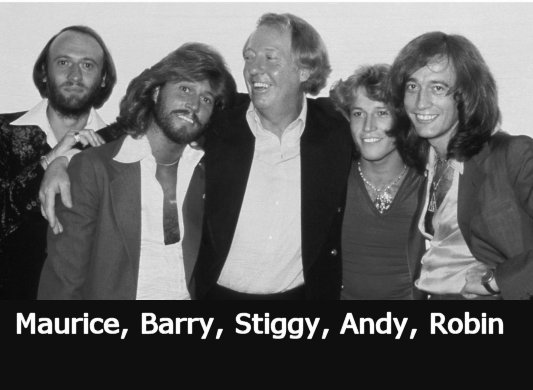 |
Therefore getting his protégés on board
for the movie was a foregone conclusion. Too bad no
one bothered to tell the Bee Gees.
When Stigwood learned that Avildsen had
refused to contact the Bee Gees, he blew his top. Screaming at the top of his lungs,
Stigwood called
Avildsen into
his office for a meeting and
demanded an explanation.
Avildsen did not back down. First
he told Stigwood he could not stand the Bee Gees. Then
he called the Bee Gees a
bunch of washed-up white guys who sounded like teenage girls
when they sang. Stigwood nearly had a stroke.
That is when something very strange
happened. Very strange indeed. Just as the arguing reached a
fever pitch, the telephone
rang. It was Fate calling.
Stigwood
answered it himself and started to smile.
Grinning, Stigwood turned to Avildsen.
"Well, John, guess what? I have
good news and
I have bad
news. The good news is that you have just been
nominated for an Academy Award for
directing Rocky.
Congratulations! The bad news is that
you're fired."
|
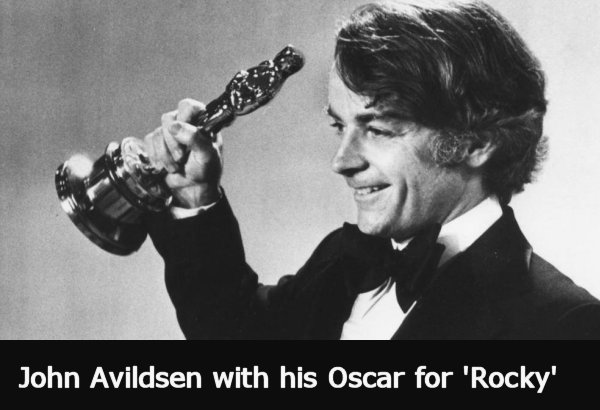 |
SUBCHAPTER 374 -
dumb luck
|
John Badham was
hired to take Avildsen's place. However, amidst the chaos of this
change on the eve of filming, everyone seemed to forget there was still no music chosen
for the film.
One day
as Travolta was
doing dance rehearsals, someone
put on the Bee Gees song 'You Should Be Dancing,'
a hit which had
been released the previous year.
Travolta said, 'Hey, that's a pretty good song.
Nice beat. Why don't you see if these Bee Gee guys have any other songs?'
When Stigwood heard what Travolta had said, he had a major panic
attack. Despite his direct orders, Stigwood was
astonished to find the Bee Gees had
still not been contacted!
Imagine how Stigwood felt upon
learning
that the Bee Gees
were completely in
the dark regarding this project. So far no one had agreed on a single song for the
movie. Stigwood was staring at a Musical without
Music. This was worse than the Sound of Music
without Edelweiss or Do-Re-Mi.
His heart racing, Stigwood immediately got on the phone.
He reached the Bee Gees who were occupying a chateau in
northern France. They were busy mixing a live
album. They had never even heard of
Saturday Night Fever.
"So, Stiggy, this is a big surprise. Tell us about
your movie."
Stigwood told the Gibb
brothers that the
song You Should Be Dancing
was great and that Travolta liked it.
Then he
told them a little bit about the movie... it was a
low-budget
film with
Travolta playing
the
cocky but aloof dance stud surrounded by countless adoring women. Then Stigwood got to the
point and asked the guys if they
had any other
songs they could contribute. Or
if they felt like it, maybe they could write the entire
soundtrack.
The three brothers were fairly shocked.
This request was completely out of the blue, but better
later than never. After all, this was Stiggy, their
patron, their compadre. So they quickly signed
on, right? WRONG.
The Bee Gees looked at each other and nodded, 'No way,
we're busy, forget it!'
Feeling a bit guilty, the brothers spoke up.
'Look, Stiggy,
you can't just ring us up and expect us to drop
everything we're doing. You know damn well we
can't just snap our fingers and pull a hit song out of
thin air. Besides, we have our own
album to do.
We're sorry, but
we don't have the time to sit down and write
music for your
film.'
With regret,
Stigwood said he understood and hung up. Stigwood
was at a complete loss. What was he going to do
without the Bee Gees? Stigwood wasn't mad at the brothers, but it hurt
to know he had taken on this project to help
them only to see this invaluable opportunity go to waste.
Meanwhile,
the brothers kicked it around after the call. Barry pointed
out that Stigwood had been their friend through thick and
thin. When things were rough, Stigwood believed
in them.
They all started to nod. It was true, Stiggy had always
been there even when they totally screwed up their career.
With their conscience prodding them in the right direction, the brothers
changed their mind. In an extraordinary show of
loyalty, the
Gibb brothers stopped what they were doing and began to work
'feverishly' on this
unexpected project.
The thing is,
the Bee Gee's sudden change of heart wasn't ordinary luck,
this was what one would call 'Dumb Luck'. Everyone had dropped the
ball on the Bee Gees and yet at the very last minute,
Stigwood got his guys on board with his desperate
SOS plea. What happened
next was
insane. Once they got started,
their imaginations were on
fire!!
The
three brothers wrote five songs in one weekend, every one
them destined to be future mega-hits.
•
Staying Alive
•
How Deep is
Your Love?
•
Night Fever
•
More
Than a Woman
•
If I Can't Have You
In addition, the
Bee Gees decided their two previous dance hits,
Jive
Talkin' and You Should Be Dancing,
should be included.
One week after
the phone call, Barry Gibb handed Stigwood seven dance tracks.
The Bee Gees were now the featured artists on the upcoming
SNF music album.
Destiny was breaking right for the
Bee Gees.
Despite having no idea how their music would be used,
these
catchy songs would lead to an amazing comeback in their
career. Thanks to their
uncanny burst of creativity, the Bee Gees would become
the hottest group on the planet. Ah, Fate and its
twists and turns.
As we now know,
the music from Saturday Night Fever became
the best-selling soundtrack album of all time.
The
Bee Gees were rewarded beyond their wildest dreams when their
songs made
music history. Not bad for a last-minute
weekend effort.
|
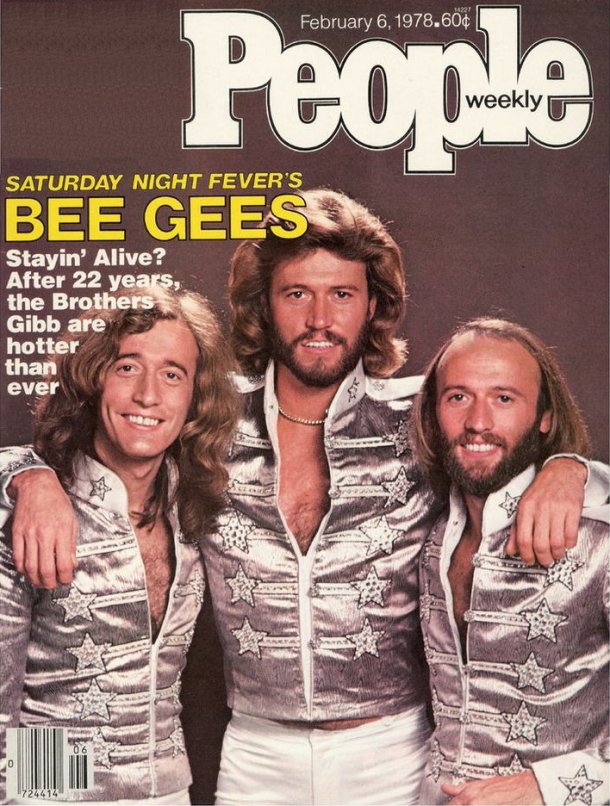
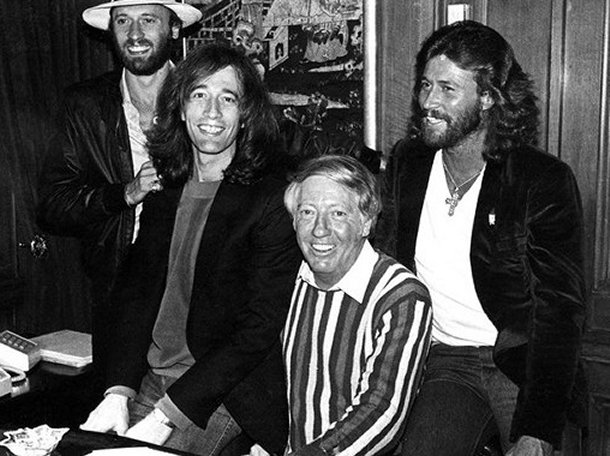
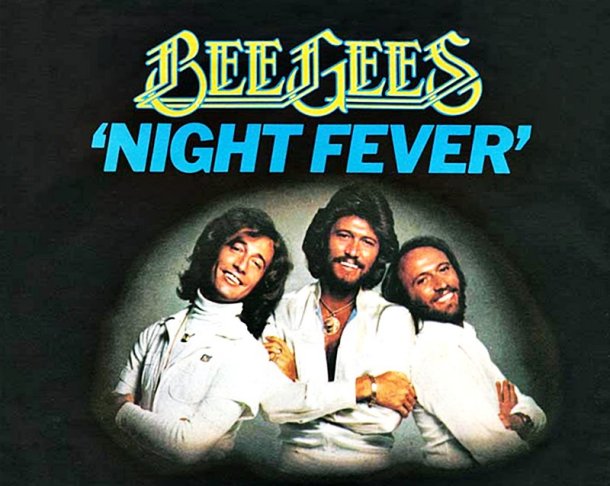 |
SUBCHAPTER 375 -
SUPERSTAR
|
| |
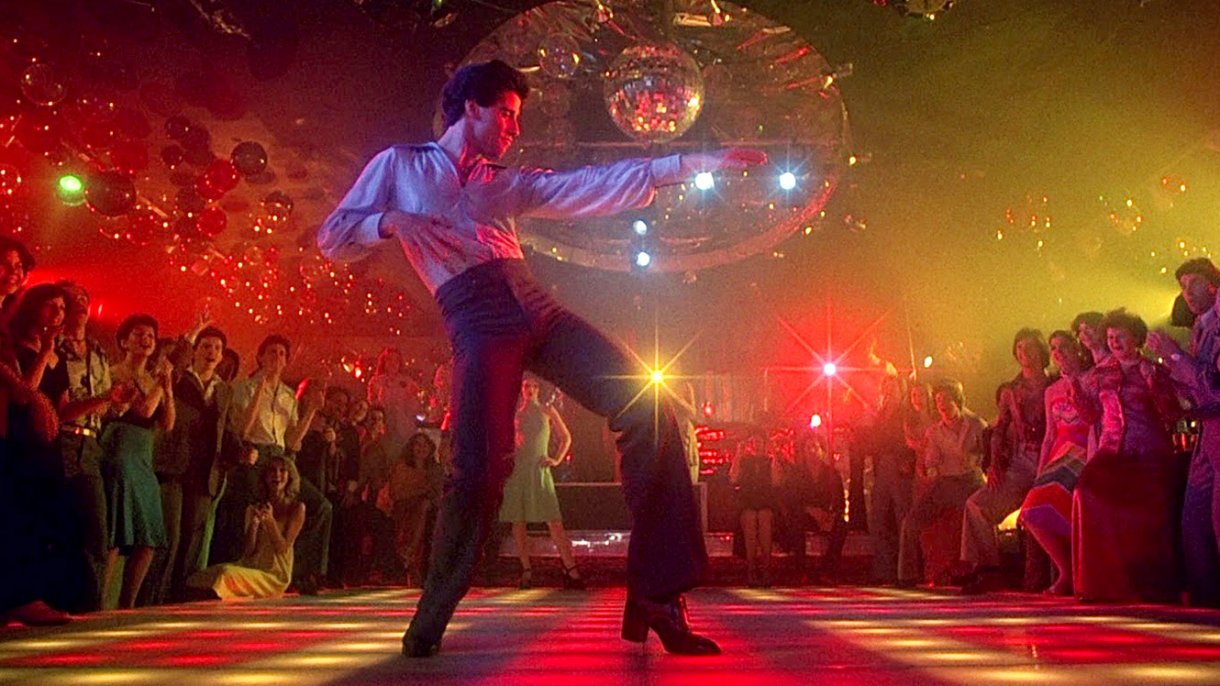 |
Every once in a
while a movie comes along that no one expects much
from, but it becomes special anyway. Most people
point to Casablanca as the best example. In a
similar fashion,
Saturday Night Fever
became a classic as well. Despite low expectations for
Stigwood’s scrappy,
low-budget
Disco movie, this hard-hitting story of directionless youth
with John Travolta as the Dancing James Dean packed quite a punch.
By now, it is
clear that Robert Stigwood caught one lucky break
after another with Saturday Night Fever.
The perfect timing of Nik Cohn's story, Norman
Wexler's script, and the mystical ability of the Bee
Gees to write five smash hits in one weekend all
suggest there was a special light shining on this
project.
Some people say
Stigwood's most incredible break of all had to be
the inclusion of John Travolta. Wrong.
This was not luck. Give the man
some credit. Robert Stigwood was the guy
everyone in the industry laughed at for handing 'Vinnie Barbarino' a million
dollars. Who's laughing now?
Not only did
Stigwood see Travolta's
potential right from the start, he also saw
the potential of Grease to be a
mega-hit movie seven years in advance. Convinced the pairing of Travolta and Grease
would be box-office magic, history has shown Stigwood's instincts were right on the money.
To date, Grease has earned $400
million and still counting.
However, we
also know the major reason that Grease
did so well was its ability to tap into the momentum
created by John Travolta's sensational performance in Saturday
Night Fever. It was uncanny how
Travolta was tailor-made for the role as the cocky, yet moody dance stud.
Actress Dinah Manoff had this to say
about her fellow actor.
"There was an energy surrounding John unlike anything I
had ever experienced. It wasn’t even lusting
on my part.
It was being in the presence of something epic. I
had never been around a charisma that was at its peak
that way. I cannot describe it to you. There
is no other movie star I have ever been around who
carried the energy John did in those days with
Grease and Fever. And the funny
thing is that John didn't even know how good he was.”
Saturday
Night Fever
changed John Travolta’s life.
Travolta was wonderful as the ambitious young man who yearned to make
something of himself. Thanks to his performance,
Saturday Night Fever struck
a chord with audiences all over the world.
What Marlon Brando and James Dean
were to the Fifties and Mick Jagger and Jim Morrison were to the Sixties,
John Travolta
achieved equal status in the Seventies.
Saturday
Night Fever gave the decade its cultural identity and John
Travolta became a pop culture icon. For this moment in
time, John Travolta was the brightest star in the
galaxy.
|
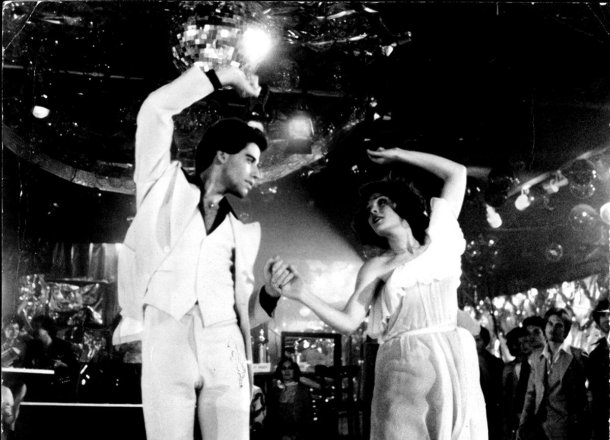
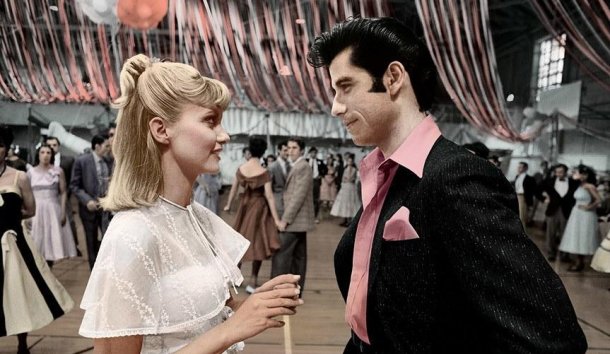
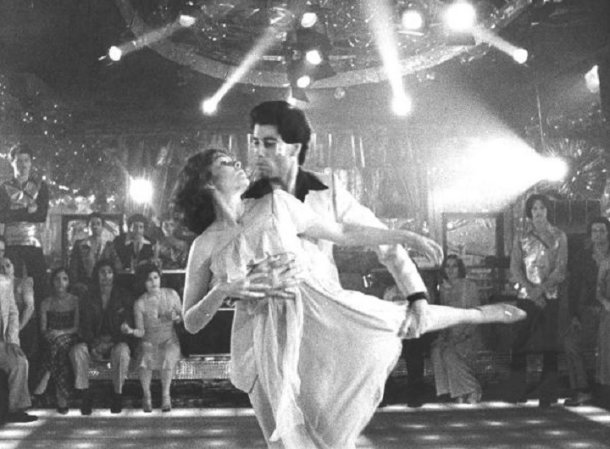
|
SUBCHAPTER 376
-
OBSERVATION
49
|
Rick Archer's Footnote:
Like Magic, everything came together for Robert Stigwood.
A powerful story, a gifted actor, and the inspired music fit
together so perfectly that one might actually be tempted to give the
concept of 'Synchronicity' a closer look.
Synchronicity is
a term synonymous
with 'meaningful coincidence'. To believe in
Synchronicity is to believe the old saying there are
no accidents. Not everyone agrees with this
far-fetched idea.
Synchronicity is one of those mumbo jumbo terms like
esp, mojo, sixth sense and voodoo
that skeptics relegate to the dustbin of pseudoscience.
So is there any
reason to believe in Synchronicity? Good question.
In my
opinion, the easiest way to make a case for
Synchronicity is to point a finger at
Saturday Night Fever.
|
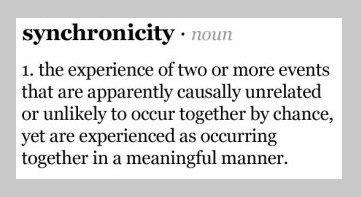 |
Not much was
expected from this movie.
Keep in mind this tale was supposed to be a low-budget
throwaway project. All Stigwood was trying to do was
keep Travolta busy until Grease became
available. And yet by complete accident, Stigwood was
able
to
hit a gold mine with Saturday Night Fever because he
caught
three talents... Travolta, Bee Gees, and Wexler... at the
absolute hungriest part of their careers. Working
together, Stigwood and his talented men came up with
something transcendent.
People ask if anyone knew in advance how special the
movie was going to be.
Bill Oakes, right
hand man to Robert Stigwood, said his boss was certain
this was going to be a big hit, but he was the only one with
that kind of confidence. To everyone
else at Paramount,
the success of Saturday Night Fever
came as a huge surprise. Before the release, the smart-ass
muckamucks at Paramount thought the movie was
a joke.
Oakes was especially resentful of their
condescending attitude.
"Paramount didn't care
a lick about our movie. They gave
us an office on the lot the size of a broom closet and
called Saturday Night Fever the studio's 'little disco
movie'. I could not stand that phrase.
Senior executives for Paramount would visit
the Fever set. They would snoop around,
complain about this or that, then ask
disparagingly, "Well,
Billy Boy, how's
your little disco movie doing?"
|
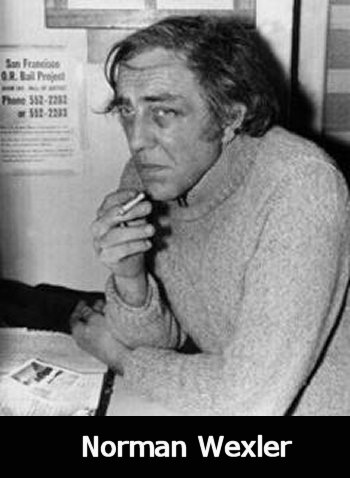 |
Oakes claimed that Robert Stigwood was certain the movie was
going to be a hit. One might ask if Stigwood had a
sixth sense about this project. After all, the Nik
Cohn story appeared out of thin air the same moment Stigwood
got the bad news about Grease being
unavailable. Talk about a good omen. I suppose
if something is meant to be, you are bound to get some lucky
breaks.
Stigwood was so lucky that even his mistakes worked in his
favor. Say what
you will about Director John Avildsen, the man Stigwood
fired. Avildsen was wrong
about the Bee Gees, but he was right about a lot of other
things. For example,
Avildsen told John Travolta that he was fat and couldn't dance a
lick. Deeply offended, Travolta worked his butt off to
prove Avildsen wrong. Without Avildsen's prodding,
would Travolta have given as good a performance?
Avildsen's criticism of the movie script was crucial to the
success of the movie. Nik Cohn
had written a fairy tale off the top of his head, then
insisted he be allowed to write the movie script as part of his
deal.
However, Cohn had no experience at
writing a movie script. Stigwood was fortunate that
Avildsen recognized the limitations of Cohn's work.
Avildsen
insisted on hiring Norman Wexler over Stigwood's strenuous objections.
What a lucky break! Wacko Wexler
took Cohn's fake 15-page magazine story and breathed life into
it.
Norman Wexler gave this
low-budget movie a truly extraordinary script. His
work was so good that Wexler won the 1977 Writers Guild of
America Award for Best Original Screenplay. Meanwhile
the disgraced director John Avildsen was given absolutely no
credit whatsoever. This is very ironic because without
Avildsen's competence, the movie might have flopped.
|
In the years to follow,
Saturday Night
Fever was credited with
kicking off the Disco Era, but
the truth was more complicated than that. Back in 1976,
the
'Suits'
thought the whole thing was rather
silly because the timing was wrong.
They believed Disco had run its course.
Actually, there was some credibility to
that sentiment.
When Nik Cohn's article appeared in
New York
magazine, many in the music industry believed that
Disco music with its
repetitive electronic background and vapid lyrics was on
the way
out. People in the know said Disco was trending down.
What the movie
did was breathe
new life into a dying genre.
Saturday Night Fever
did not jump on a swelling bandwagon, but rather resuscitated
something on its way out. So in that sense, SNF
really did create the Disco Era. Or perhaps we
should call it 'Act Two'. Thanks to the movie
and its soundtrack, Disco achieved more widespread,
mainstream, middle-America success than it ever had before.
Although 'Luck'
was a major factor, there was clearly a great amount of
skill involved as well. Another smart move
Robert Stigwood made
was to release the soundtrack
before the film's debut. This strategy was both
innovative and brilliant. No soundtrack had ever been
released in advance before. There is an anecdote that bears out the effectiveness of
Stigwood's
move. Michael Eisner, head of production at
Paramount, was skiing in Vail, Colorado, in December two weeks before
the movie opened.
"I
heard Staying Alive at the bottom of the
ski lift. Then it was playing at the top of the lift.
I heard it again in the restaurant at the top of the
mountain.
Something was definitely going on, so I called my
boss Barry Diller, head of Paramount. I said, "Barry,
everywhere I go, I hear the music. What do you think? Do we have a hit here?"
Then the movie opened. Travolta was the biggest
damn
thing that ever happened. In the first 11 weeks,
the movie made $11 million. Over time, it would
gross $285 million. The soundtrack was not only
the best-selling soundtrack of all time, it would hold
the record for 14 years, an eternity in this business.
Someone really knew what they were doing with this
music."
|
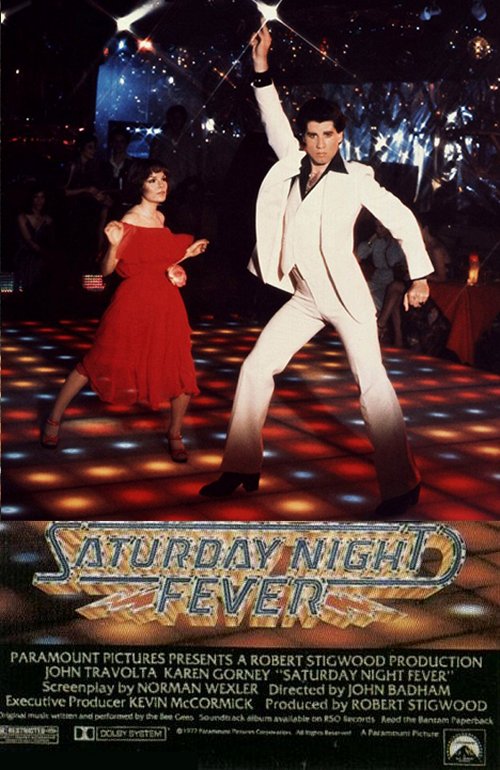 |
They always say that when you're hot, you're hot.
Robert Stigwood clearly
had the Midas Touch.
Everything he touched turned to gold. The
last-minute inclusion of the Bee Gee music was just one of
many 'dumb lucky' breaks for Stigwood.
"Someone really knew
what they were doing with this music..."
Oh boy, they sure did know what they were doing with the
music, didn't they? Let's go ahead and wait till the
movie is nearly done with the filming,
then call the Bee Gees.
Thank goodness it all worked out. Due to Stigwood's gut-feeling about his boys,
Saturday Night Fever
revived the career of the Bee Gees.
Their
original music score anchored
the
best-selling movie soundtrack album of all time.
And the box office?
Saturday Night Fever would go on to gross $285 million.
Its combined box office and soundtrack sales would make it
one of the most lucrative films in history.
Lost in
all the hoopla was the original budget... $3.5 million.
Considering the importance Saturday Night Fever
had on my life, I studied
Robert Stigwood with intense curiosity.
How do successful people become successful? In Stigwood's case, it was obvious that
he had a keen eye for talent.
Another
characteristic was Stigwood's willingness to
bet on his own instincts. Of course talent and
original ideas are a prerequisite to success.
However, often the difference
between a successful person and an unknown is the courage one
musters to take a calculated risk and bet on
one's ideas.
I could not escape the feeling that Stigwood was Lucky.
In fact, I am
surprised at the number of successful people who cite 'Luck' as a major
factor. Many tales of successful people involve being
in the right place at the right time. Thanks to a
lucky break, they were chosen for a position ahead of
other people who were just as talented and just as ambitious.
To me, the story of
Robert Stigwood is pure Fate. At this
one magic time in his life, everything turned to Gold.
Even when Stigwood screwed up... John Avildsen and the Bee Gees story
for example... things worked out to perfection.
The way I see it, someone up there liked Robert Stigwood.
To me, the
funniest aspect of all is that the entire phenomenon started
on a fake story. Without
Slick Nik and his brazen nerve to pass off a fairy tale as
the Real Thing, Disco would be little more than a footnote
as silly music from the Seventies. There
would be no Bee Gees megahits, no Travolta
superstardom, no Disco acrobatics, and no nostalgic Disco parties
complete with ugly clothes, bad jokes and crazy hair styles.
All this because some English stiff made up a wild yarn and
sold it as truth. Barry
Gibb once said to Nik Cohn, “This is all your bloody fault, isn’t it?” Cohn
just nodded.
I don't approve of Cohn's methods, but Nik the Slick was
clearly Destined to play a major role in this unusual story.
Nik Cohn definitely got lucky. But you know what?
So did a lot of people! Stigwood, Travolta,
Cohn, Wexler, the Bee Gees to name a few. Throughout the
behind-the-scenes story
of Fever, I got the feeling
that everyone involved suddenly became much smarter and more
creative than at any other time in their
life. 5 hits songs in one weekend!
Best screenplay of his life! 'It was like being
in the presence of something epic. I had never been
around a charisma that was at its peak that way.'
Everyone was at the top of their game. Using a
sports cliché, it was a career year for everyone.
The way Fever worked out so perfectly defies
the imagination. In fact, so many things clicked, one
might believe Robert Stigwood had the Wheel of Fortune spinning in his direction
and brought everyone else along for the ride. Do you believe in
Synchronicity yet?
|
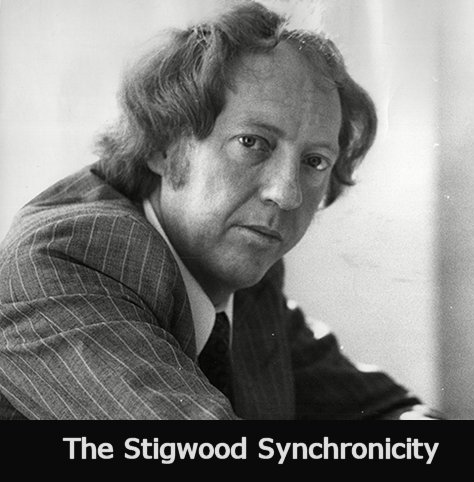
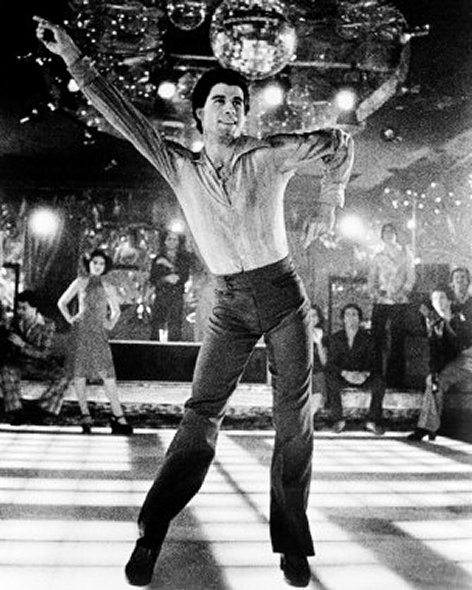 |
|
MAGIC CARPET RIDE, PART
TWO
Chapter
EIGHTY EIGHT:
CROSSROAD
|
|
Rick Archer's Note:
As we know, a year and a
half after Saturday Night Fever, Travolta went on to
film Grease. This became a second mega-hit
collaboration between Robert Stigwood and John Travolta. But
what about the mysterious third movie that the original three-movie
contract called for? I knew you would be curious, so I grabbed
a segment from Chapter 178 of Magic Carpet Ride to
satisfy your curiosity.
I hope you enjoyed
reading my story as much as I did researching it.
|
SUBCHAPTER 781
- A QUIRK OF FATE
|
To make
a long story short, John Travolta had to beg the
Movie Moguls to let
him be in Urban Cowboy. That is hard
to believe, but it is true. It all
went back to the contract Travolta had signed with
Robert Stigwood. The contract called for
Travolta to do three movies.
-
Saturday
Night Fever
-
Grease
- And, uh,
yeah, that third Stigwood blockbuster.
Out of
curiosity, can you name
John Travolta's third Stigwood movie? If
you are stumped, don't feel bad. I drew a
compete blank and I bet you will too. The odds
of getting it right are slim and none. But if
you succeed, I definitely want you on my Movie
Trivia team.
One
reason no one remembers Travolta's third Stigwood movie is because apparently no one
ever saw it. Well, maybe a few people saw it, but they won't
admit it. Okay, either you know the answer or
you don't care or you've finished looking it up on Google.
Either
way, let's get to it.
|
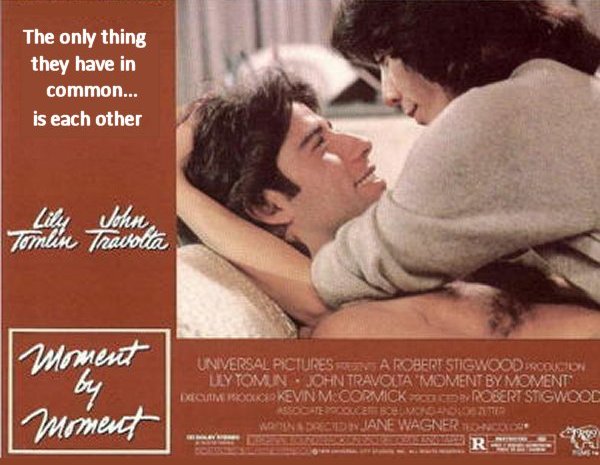 |
Moment by
Moment
(1978) with Lily Tomlin was Travolta's third
Stigwood movie. This movie was an unmitigated flop.
'The
only thing they have in common is each other.'
What utter
nonsense.
They had
NOTHING IN COMMON. Any two people off the street reading
lines from the script would have been more effective. Cast as a 'May-December'
romance, Tomlin and Travolta were mismatched stars
from the start. They had the worst chemistry
in cinematic history. Tomlin did not click at
all as Travolta's cougar girlfriend. No
sizzle, just fizzle.
However, the
thing that catapulted this flick from mere flop to
catastrophic failure was an unanticipated bad break.
Lily Tomlin bore an uncanny resemblance to Travolta
in both facial structure and body type. Making
matters worse, their matching hair styles made the
weird resemblance impossible to miss.
On screen,
Tomlin looked more like Travolta's mother than his
girlfriend.
It did not help that Tomlin was 16 years older, thus
making the mother-son connection a biological
possibility.
The moment
their icky hot tub scene screamed 'Incest!',
everyone in the theater got a bad case of the
heebie-jeebies. The movie was so creepy,
droves of people got up and left.
|

Here is the problem. The moment you look at the
pictures and think 'Mother Son', it is virtually
impossible to go back to seeing them as romantic partners.
That incest thing just keeps screaming at you. The Travolta-Tomlin
resemblance was so obvious, one would think the director or
someone would have noticed during the filming. More
likely everyone had the sense to look the other way, sort of
like the 'Emperor's New Clothes'. For crying out loud,
will someone please give Travolta a crew cut or stick a blonde wig on
Tomlin? Either Travolta
was guilty of seducing his mother or he was having sex with his older sister.
The sex scenes were unbearable to watch.
The bad news was that
no one went to see this movie. The good news
was that no one went to see this movie. The
movie was pulled from theaters as fast as humanly possible,
but the ensuing criticism drove Travolta to madness. Although
his star
power survived due to the movie's
anonymity, his ego was
seriously damaged by the withering negativity. Many years later, Travolta
was asked to comment on the Moment by
Moment fiasco.
|
 |
Interview Question:
"John, Saturday
Night Fever turned you into a cultural icon. What
was your reaction to the impact of Moment by Moment?”
Travolta:
"I
think with Fever, people were evaluating my impact
more than they were my acting. As for Moment by Moment,
my God, you would have thought I had committed murder or
something! It was serious trouble.
And
the weird thing was that everything in my life up to that
point, well, I don’t know of a career that had gone more
smoothly and successfully than mine. Welcome Back
Kotter, Carrie, Boy in the Plastic Bubble, Saturday Night Fever and
Grease - they were five major strokes that were 100
percent all right.
Unfortunately, at the very peak, when the lights were on
full and everybody was watching and waiting, here comes Moment by
Moment. Boom. Failure! And not just ordinary
failure, but gut-wrenching, horrible failure. I cringe every time I think about it."
|
Rick Archer's Note:
As
it turned out, Travolta ditched his upcoming role in American
Gigolo. The part went to Richard Gere instead.
Travolta did this because he decided he needed a tough guy
role to revitalize his soft, rather feminine screen image.
So Urban Cowboy became his next
stop. As it turned out, Travolta's presence during the filming
here in Houston and Pasadena created the same impact for
Country-Western dancing as Disco dancing. Saturday Night
Fever jump-started my dance career, but it was Urban
Cowboy that sent my dance career soaring into the upper
stratosphere. I owe a huge debt of thanks to John Travolta.
|
|